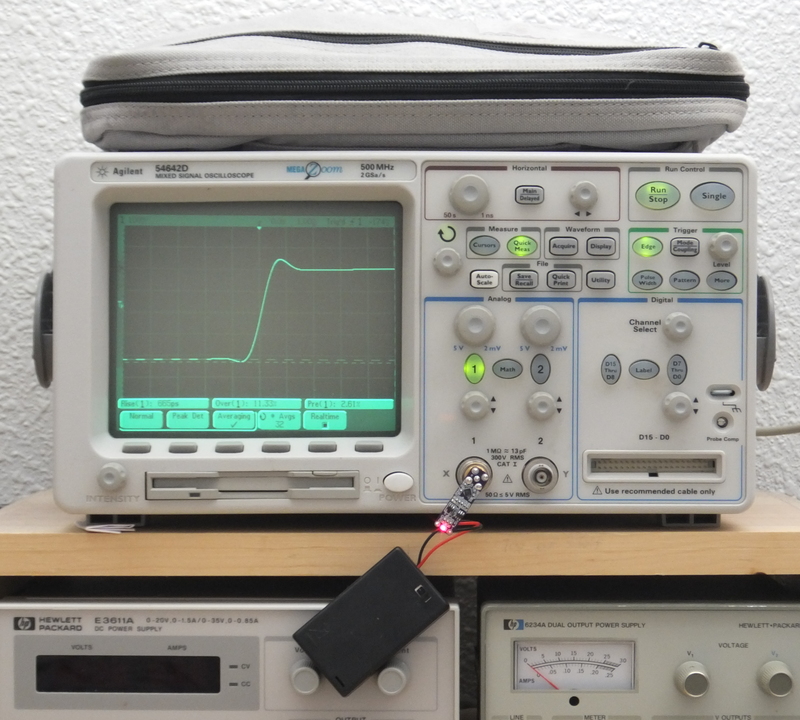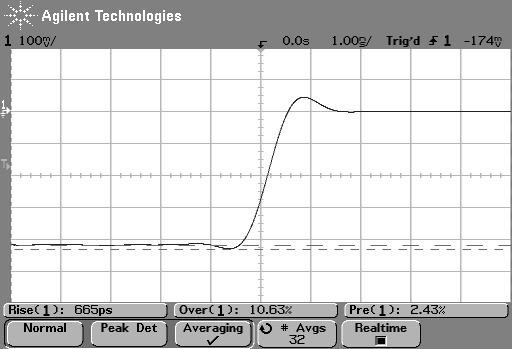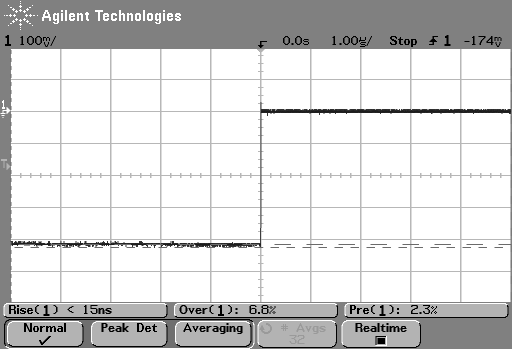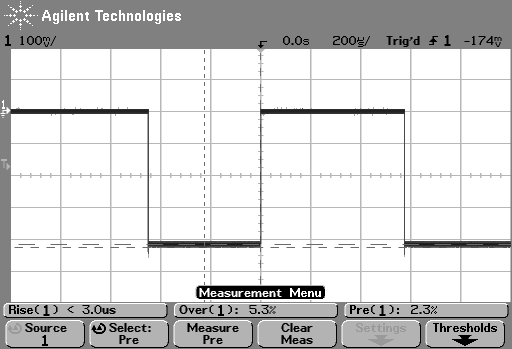Simple Fast-Risetime Step Generator
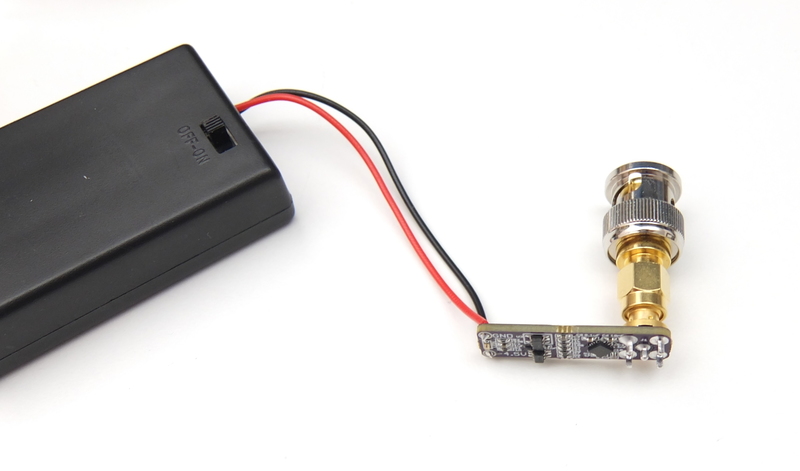
This device generates a 1kHz square wave with very short rise and fall times. This sort of signal is useful for measuring the bandwidth of oscilloscopes, probes, and other systems, since it contains a lot of high-frequency harmonics. The system bandwidth can be calculated based on the observed rise or fall time of the signal.
The circuit consists of a -3V regulator, an oscillator (based on a schmitt-trigger inverter), and a very fast CML logic gate. The logic gate is a Microchip SY58051AU multiplexer, marketed as a multipurpose logic gate. It has a differential output with a rated rise/fall time of 20ps, terminated with 50 ohms to Vcc. For compatibility with test equipment, which uses 50 ohms to ground, the circuit is powered by ground as its positive power rail and -3V as its negative power rail. Power is provided by 3xAAA batteries, or an isolated bench supply.
An SMA connector carries the output signal: a ~1kHz, 0 to -400mV square wave with very fast edges. (See below for edge speed measurements.) A noteworthy aspect is that the output pulses are very flat. The only aberration is a bit of preshoot and overshoot, which resolves within 2ns.
To connect to most oscilloscopes, an SMA male to BNC male adapter is needed. I used the Pononma 4288, which is inexpensive and rated for 12GHz bandwidth.
Measurements
Although the logic IC's output has a rated rise/fall time of 20ps, the actual output is bound to be slower. Results so far suggest that it's less than 100ps. I've measured the output on several instruments. In each case, the observed risetime has been faster than the rated risetime of the instrument. Inputs were terminated with 50 ohms and the risetime was measured from 10% to 90%.
Results:
| Scope | Specifications | Rated Rise Time | Measured Rise Time |
|---|---|---|---|
| Keysight MSO9254A | 2.5GHz, 20GSa/s | 142ps | 139ps |
| Agilent 54642D Oscilloscope | 500MHz, 2GSa/s | 700ps | 665ps |
| HP 16534A Scope Card | 500MHz, 2GSa/s | 700ps | 567ps |
Keysight MSO9254A
Using a Keysight MSO9254A (2.5GHz, 20GSa/s), the measured risetime is 139 ps. The scope's specified 10%-90% risetime is 142ps. Unlike the other scopes, this is a real specification, and not simply calculated from the bandwidth.
Agilent 54642D
On an Agilent 54642D oscilloscope (500MHz, 2GSa/s), the measured risetime is 665ps. From the manual, the 54642D's rated risetime is "~700ps", so it seems that the step generator's risetime is much smaller.
HP 16534A
The HP 16534A is a 500MHz, 2GSa/s oscilloscope card compatible with 16500 and 16700 series logic analyzer mainframes. (In this case, it's installed in a 16700B.) It measures a risetime of 567ps. Like the 54642D, the 16534A has a rated risetime of 700ps derived from its 500MHz bandwidth.



